Devotion – Part 2: Spain
Chapter 1: Córdoba
Part 2 of Devotion takes place in Spain. Spain is fabulous and complicated – clearly one of my personal favorite countries of the world. Spain is a country of countries and a culture-lover’s paradise. Several significant cultural groups reside within the country that don’t always see eye-to-eye. The Basque culture of the north/northeast has cultural elements of Spanish and French and a language unique of both. I had planned to visit the Basque region last spring; the Coronavirus got in the way! It is on my travel wish list.
In Barcelona and surrounding communities the Catalan culture dominates. Catalan is the number-one language taught in local schools with Spanish being number-two. Disagreements between Catalunya and the Spanish federal government are intense and have escalated to violence on occasion. Both Catalunya and the Basque region have expressed the interest in separating from Spain. As a visitor, these cultural differences add to the intrigue of Spain, making the visit a richer experience than it would otherwise be.
We start Part 2 in the Andelucía region, which is bordered by the Sierra Morena mountains to the north, the Atlantic Ocean and Mediterranean Sea to the south, Portugal to the west and the Murcia region, where the city of Categena is located, to the east. The name Andelucía derives from the Arabic name Al-Andalus, which the Muslims called the Iberian Peninsula when it was under their control. Andelucía has its own cultural mix, different from the other regions of Spain. It is said (but debated) that the people of the region speak a distinct dialect of Spanish. One prominent outcome of the culture is flamenco music and dance, which is a creation out of Seville but enjoyed throughout the region, Spain and the world.
We will visit three cites in three of the eight Andelucían provinces of the same names: Córdoba, then Grenada and finally Seville. On the map below Andelucía is highlighted in red.

Málaga sits on Spain’s Mediterranean coast. A one hour train ride north of there brings you to the city of Córdoba. Human activity in Córdoba dates back many thousands of years. Romans conquered the region and occupied Córdoba beginning in 206 BCE. There remain traces of Roman activity in the city, the most prominent being the Roman Bridge that was constructed in the 1st century BCE across the Guadalquivir River.
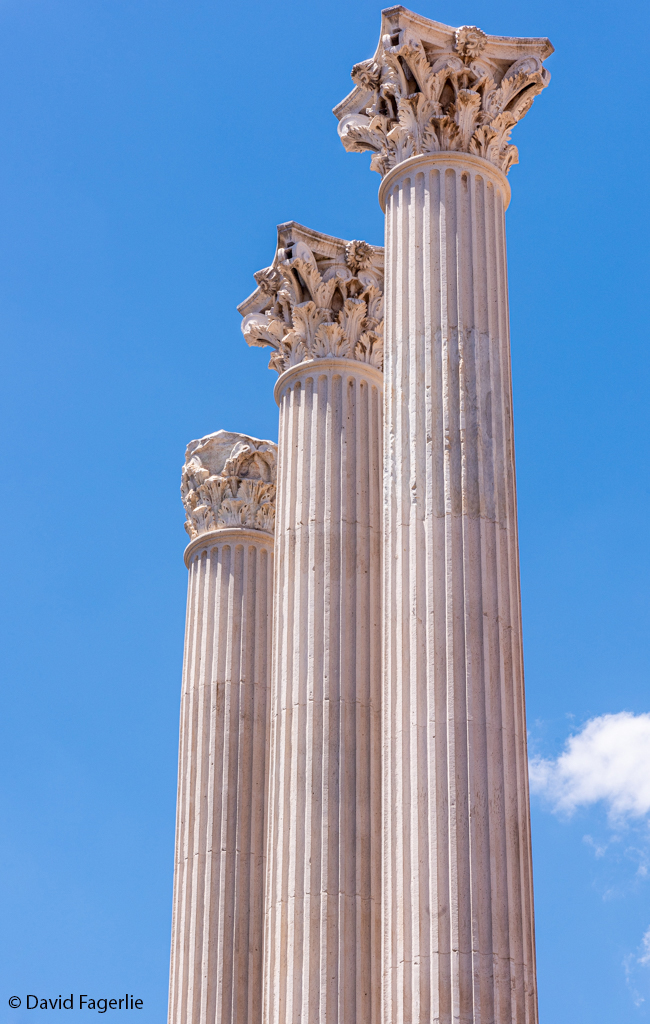
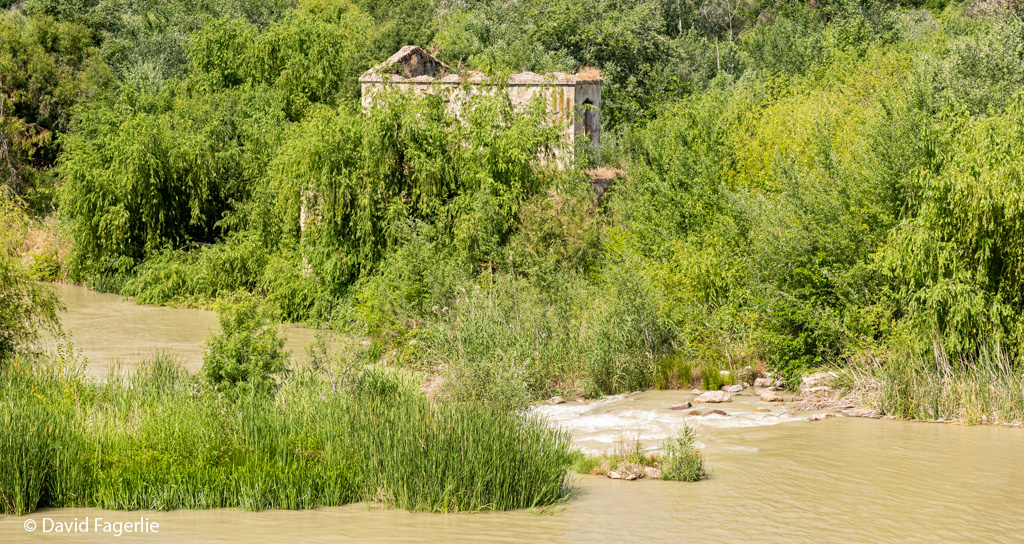
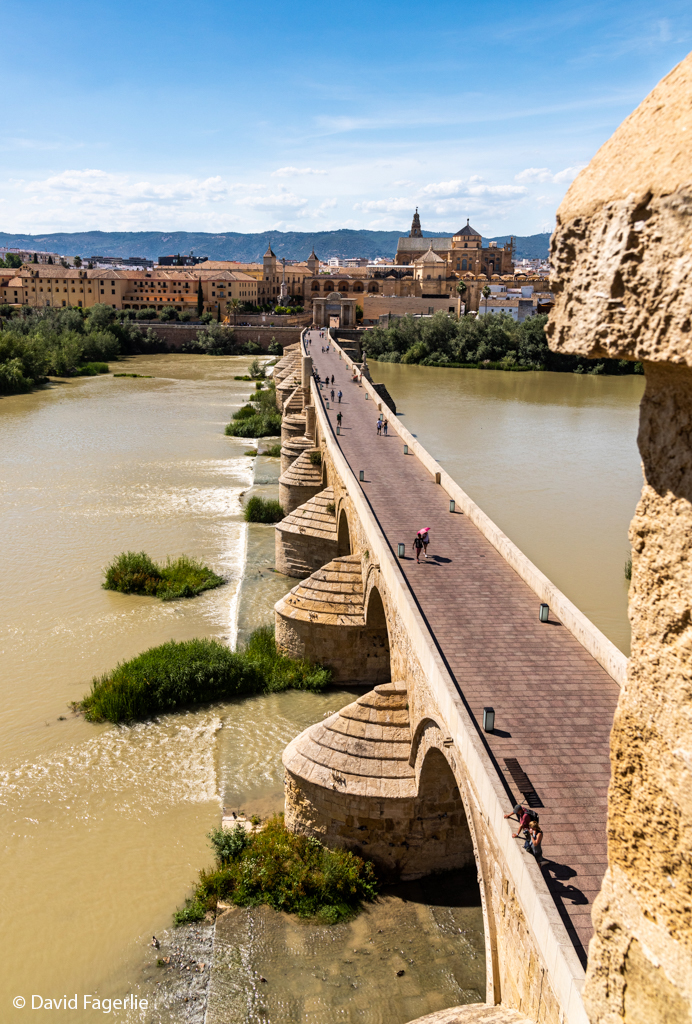

The Romans were overcome by the Visigoths, an early Gothic tribe, believed to have Scandinavian roots, that first moved south into Eastern Europe then westward into the Roman Empire beginning in 376 CE. The Visigoths continued west with deep movements south into Greece and Italy. Eventually the Visigoth movement and conquest ended in central Spain, setting up their capital in Toledo. Below is a map showing the path of travel of the Visigoth with year markers.
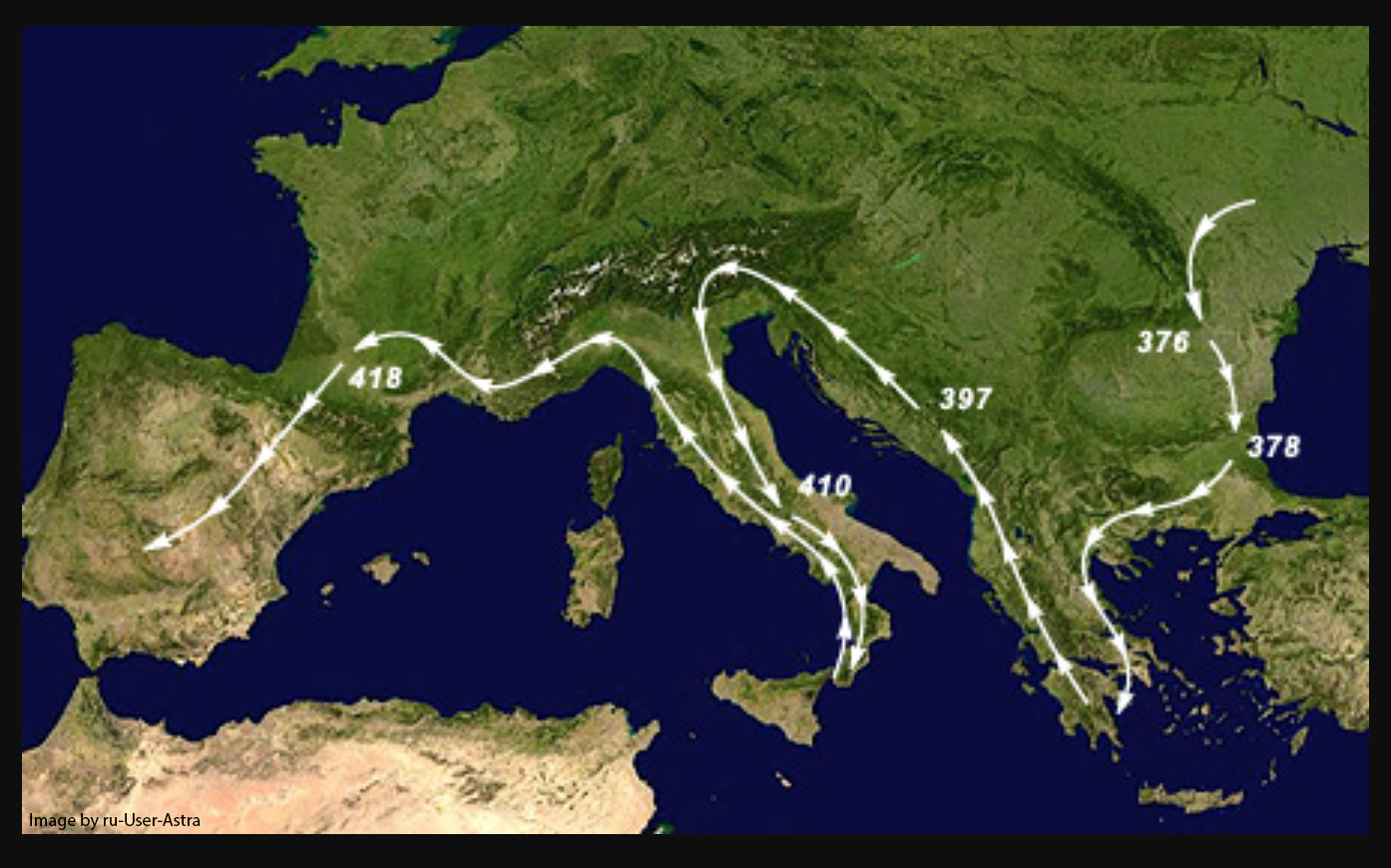
Early on, the Visigoths practiced Arianism, which resembled Christianity. In or around 589 CE the Visigoths converted from Arianism to Christianity and gradually adopted the culture of their Hispano-Roman subjects. The Visigothic Code, completed in 654, abolished the longstanding practice of applying different laws for Visigoths and the Romans that they had conquered. Once the legal distinctions were no longer made between Romani and Gothi they became known collectively as Hispani. The region was dominated by the Councils of Toledo and the episcopacy.
From the 5th century to the 7th century CE, about thirty “synods” (a term that originated from a Greek word meaning assembly) were held at Toledo, a short distance north of Córdoba but still south of Madrid. In the mid-6th century the Visigoths constructed the Basilica of San Vicente in Córdoba.
Early in 711, military forces of the Umayyad Caliphate crossed the Strait of Gibraltar from Northern Africa into Southern Spain. The Umayyad Caliphate was the second of four caliphates that formed after the death of Muhammed and it eventually controlled 11,100,000 square kilometers making it one of the largest empires in history by area.
After the Umayyad forces disembarked in Gibraltar they combined with other North African forces to form an army estimated to be about 12,000 men. This army marched north, overtaking Hispania as they went. This conquest resulted in the destruction of the Visigothic Kingdom and establishment of the Emirate of Córdoba later in 711. The basilica that was constructed by the Visigoths was divided and shared by Muslims and Christians until 784 when the Christian half was purchased by the very wealthy Emir Abd al-Rahman I, who founded the Caliphate of Córdoba that ruled most of the Iberian Peninsula for almost three centuries.
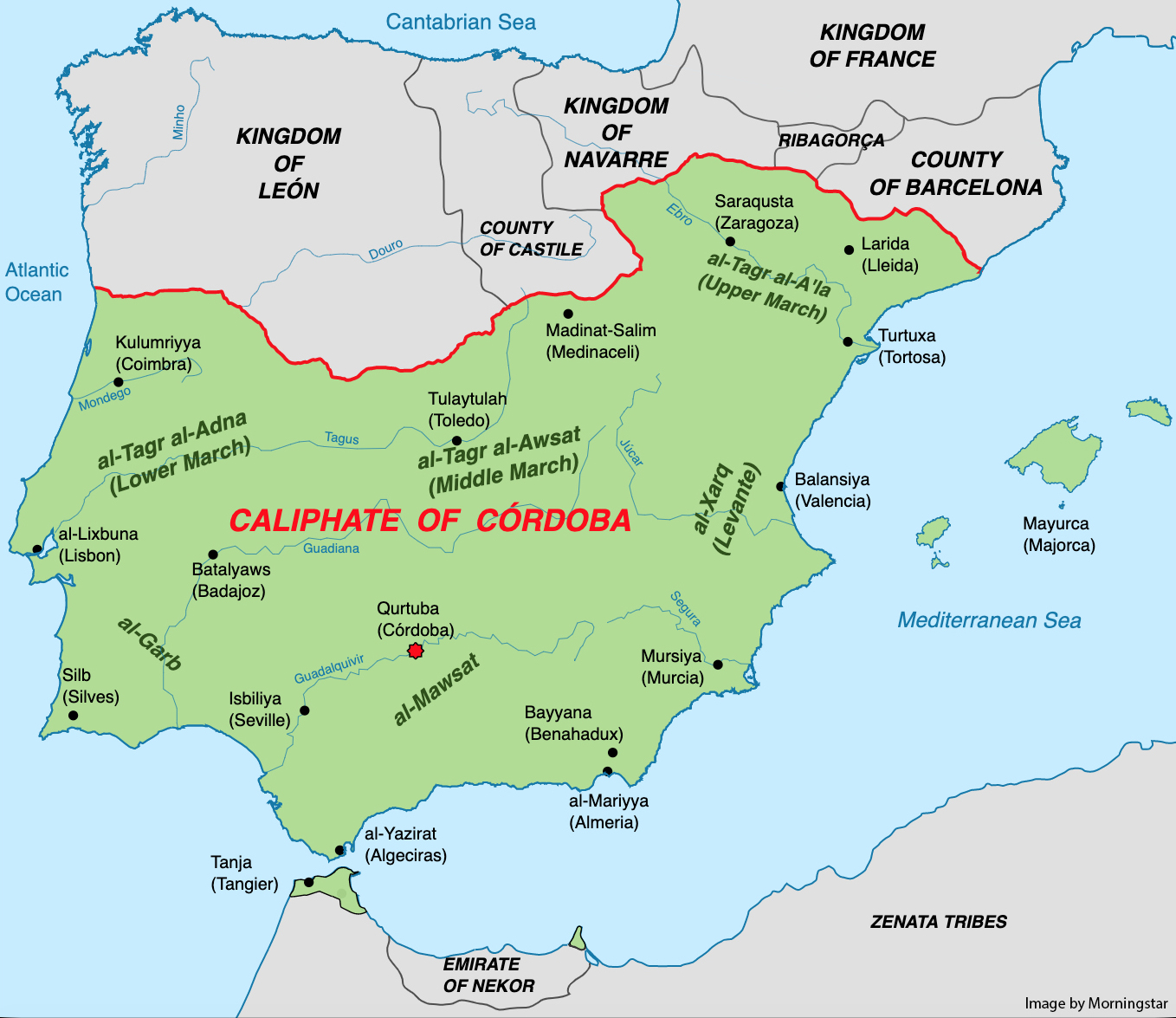
Later in 784, Abd al-Rahman I demolished the entire basilica structure to build the Grand Mosque of Córdoba on the site. His ambition was to erect a temple which would rival in magnificence those of Baghdad, Jerusalem, and Damascus, and approach in sanctity the fame of Mecca.
The initial mosque was completed in 786. In later years, from 833 to 848, the mosque was expanded by Abd al-Rahman II. From 951 to 952 Abd al-Rahman III built a new minaret, a tower from which to call the faithful to prayer, that topped out at 47 meters. Remnants of the minaret remain inside what is now a bell tower. From 962 to 966 Al Hakam II expanded the mosque again. The final expansion was constructed by Almanzor from 991 to 994, making the mosque the second largest in the world after Mecca. These expansions were to accommodate population growth. By the year 800 Córdoba’s population had grown to 200,000 and by year 1000 to 400,000. Córdoba became one of the great cities of the world.
The Grand Mosque project employed thousands of artisans and laborers. Stone and marble were quarried from the Sierra Morena mountains. Metals of various kinds were dug up from the soil and factories sprang up in Córdoba. In planning the mosque, architects incorporated a number of Roman columns. Some of the columns were already in the Gothic structure; other columns were brought from various regions of Iberia. Ivory, jasper, porphyry (rock consisting of large-grained crystals such as feldspar or quartz), gold, silver, copper, and brass were used in the decorations. Panels of scented woods were fastened with nails of pure gold, and the 856 red marble columns were said to be the work of God.
The exterior of the Mosque-Cathedral, also known simply as the Mezquita, is majestic, with colorful rock patterns that we would see many times elsewhere in the Andalucía region of Spain. Some of the exterior walls have been renovated and demonstrate the beauty that had to have captured the gazes of passersby of the time.
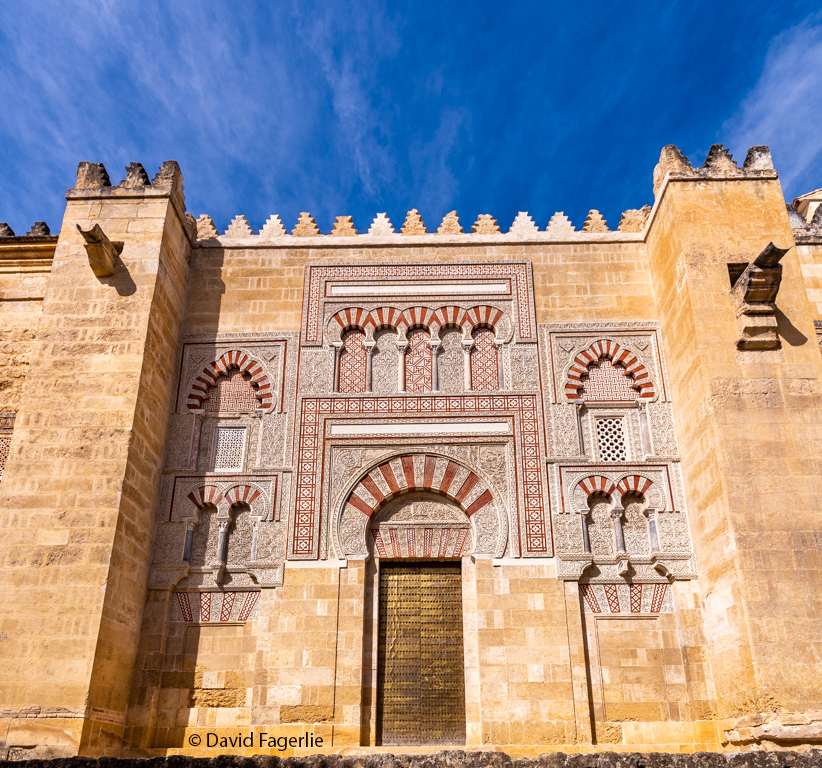
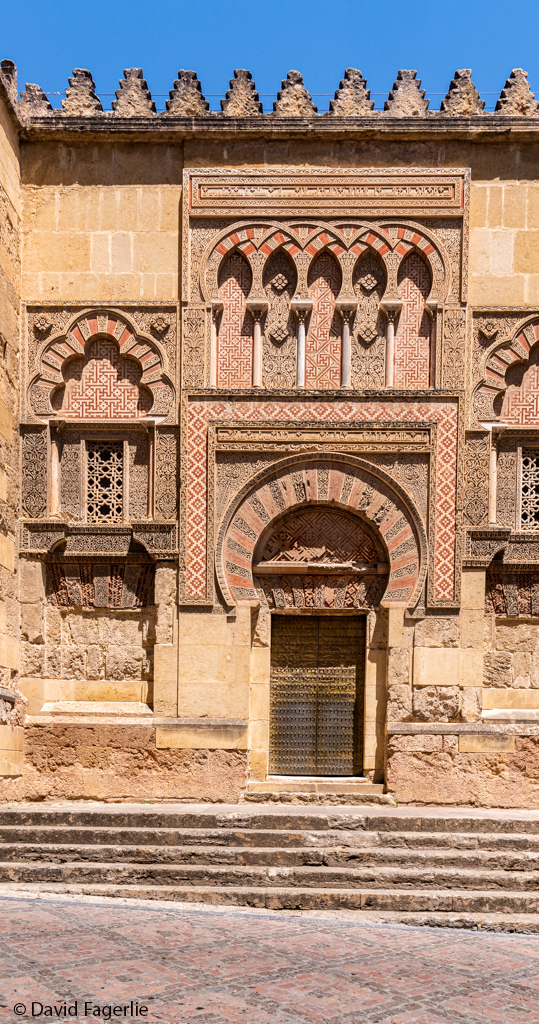
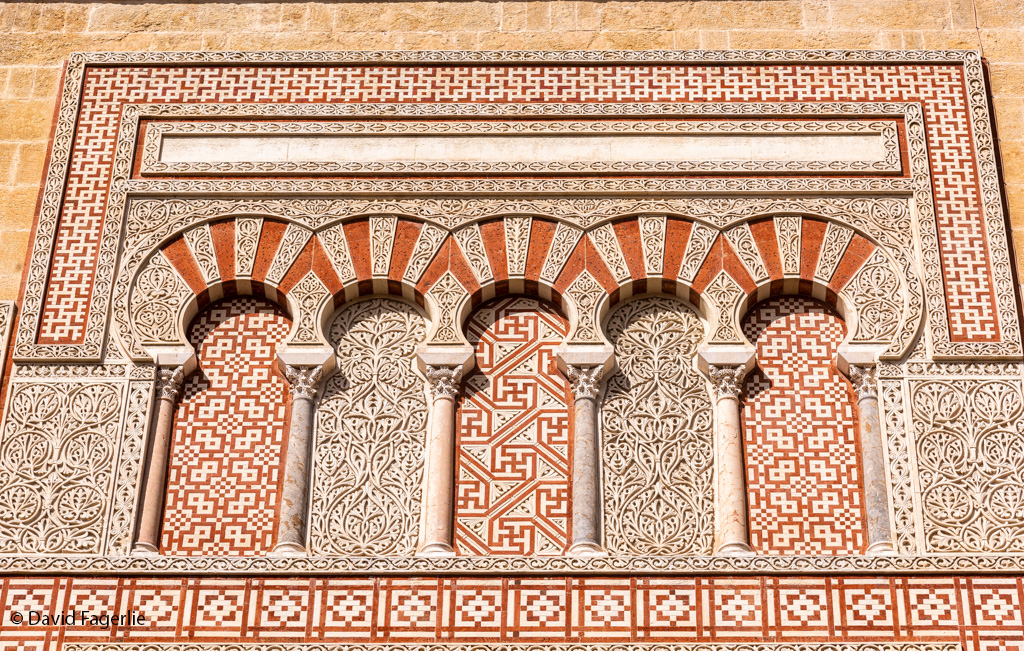
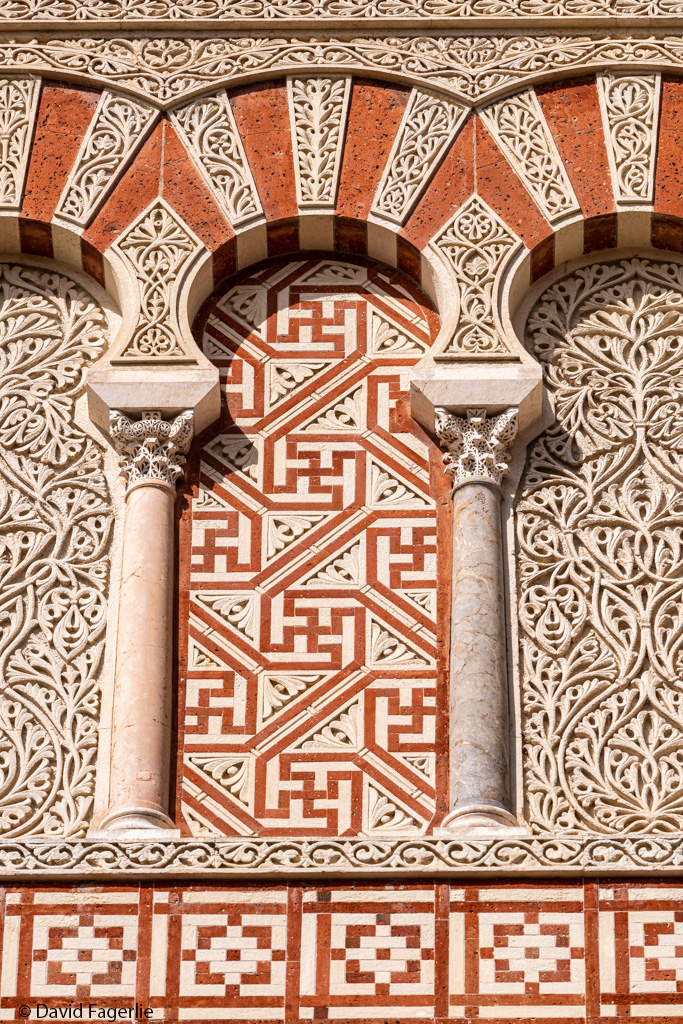
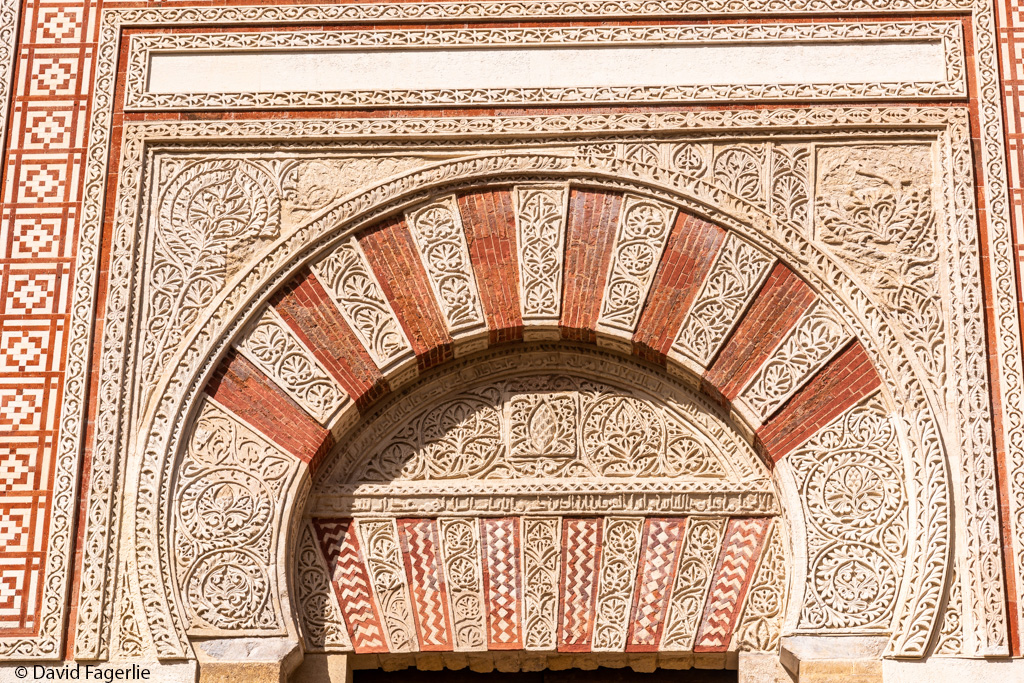
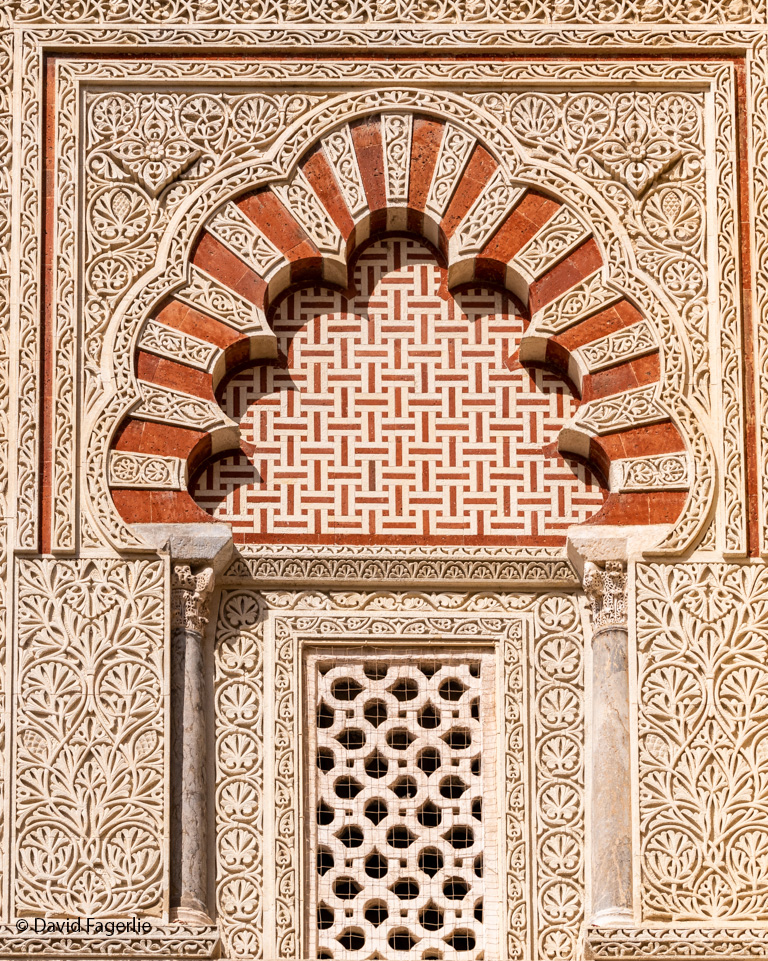
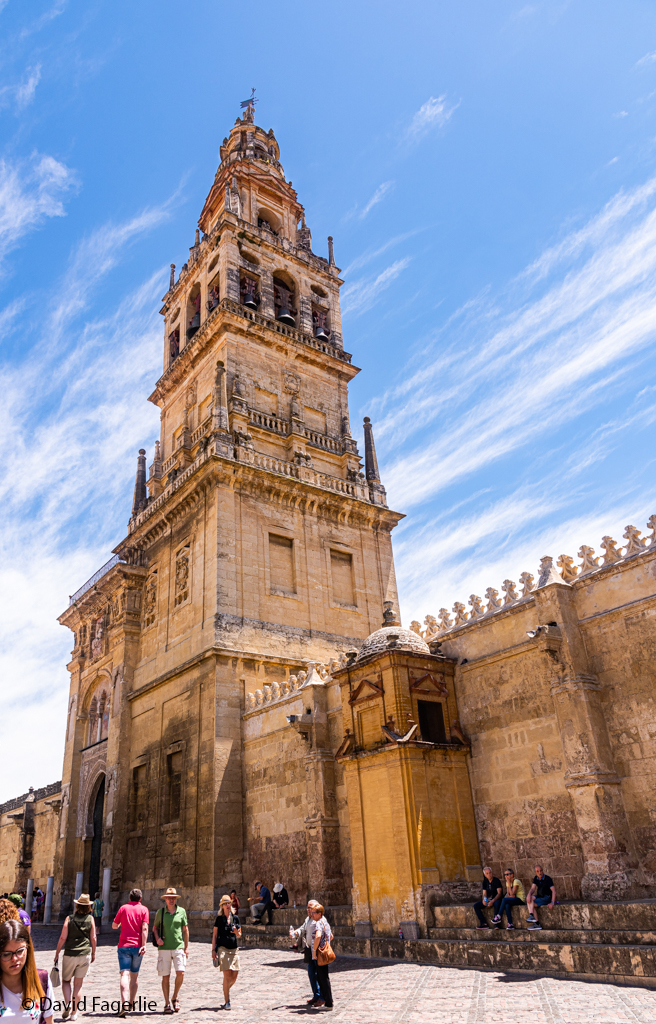
Huge doors were gateways to what we expected to be another world. What I saw surpassed expectations. I was immediately struck by the vastness of the Mezquita. Except for the hundreds of columns, the space was quite open and could have accommodated thousands of people. Arched passageways led to rooms that served some purpose in the past. Now, they were mostly empty but the walls and ceilings were magical. Now, all of it is part of a one-of-a-kind architectural museum.
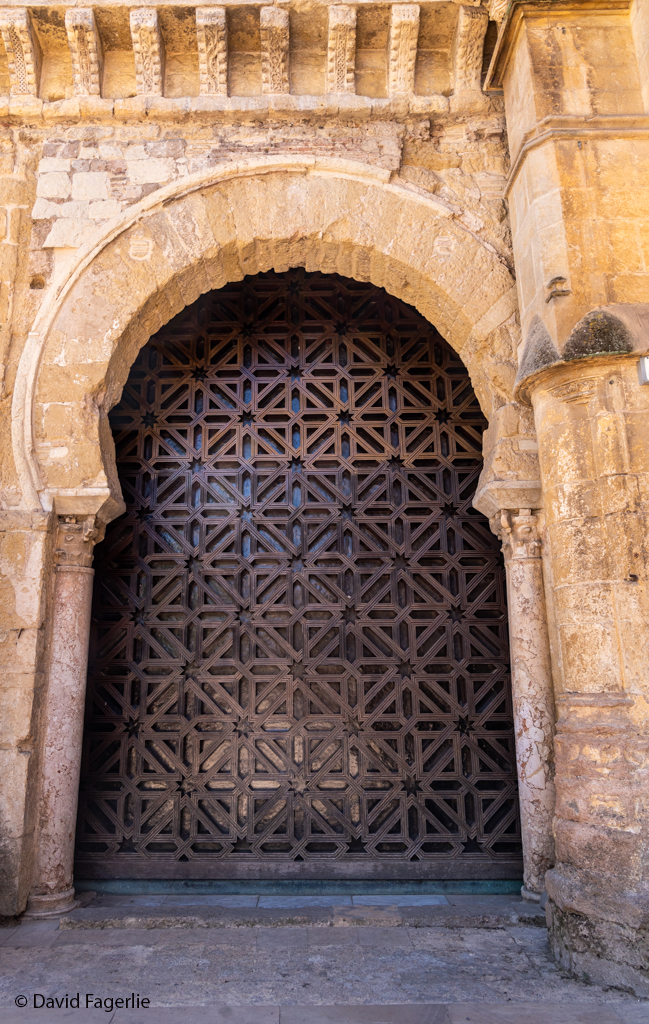
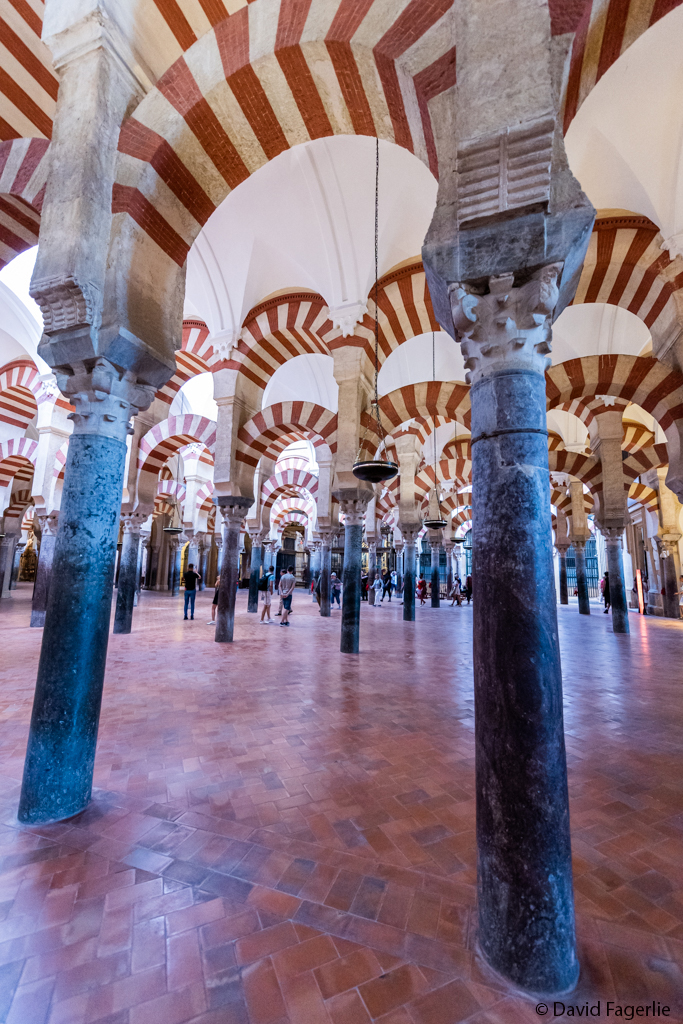
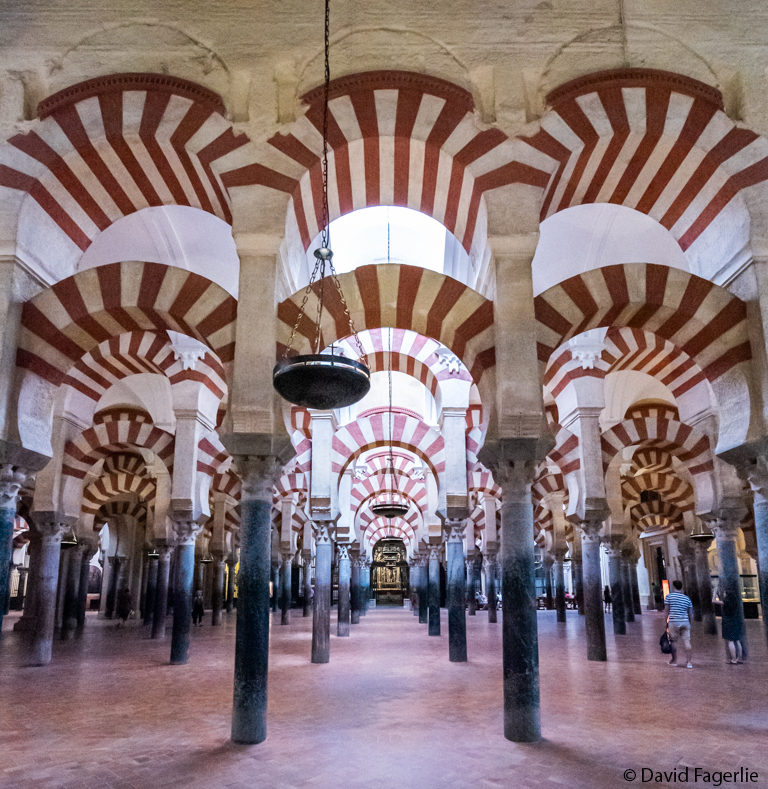
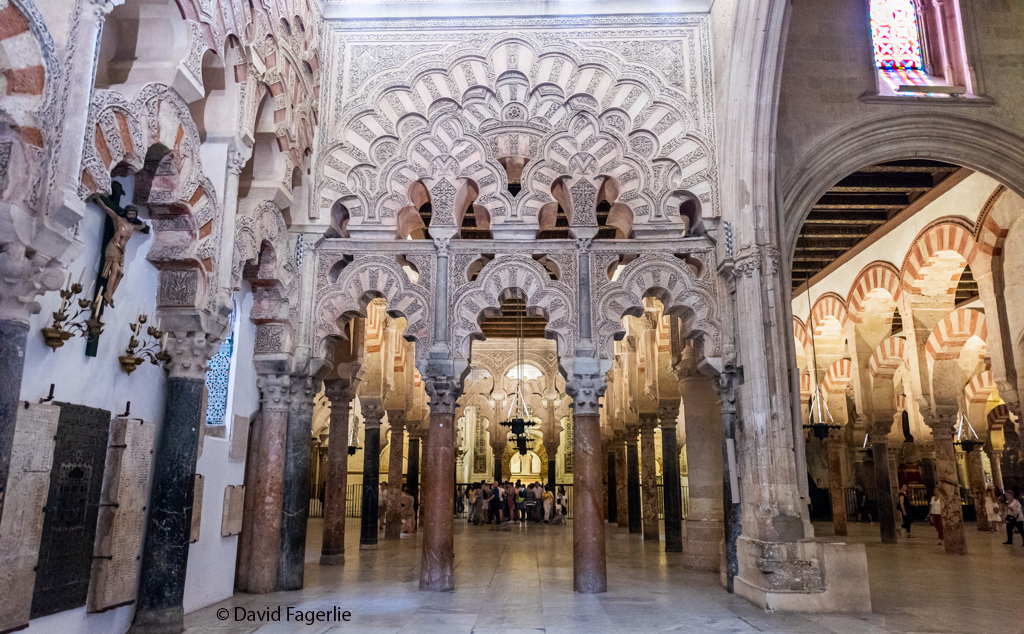
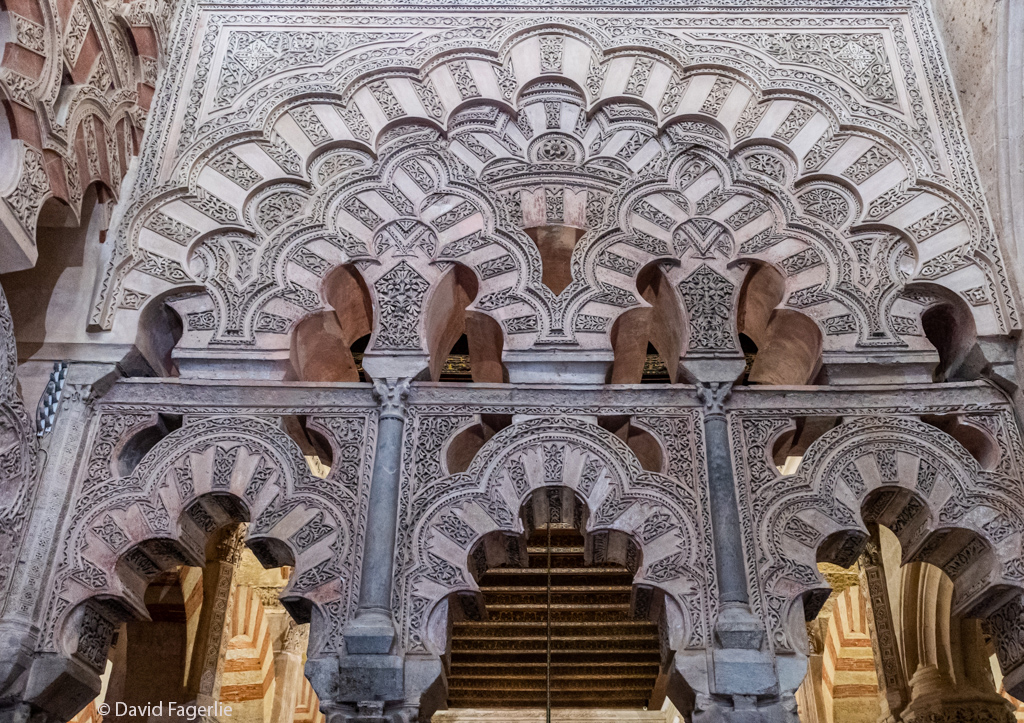
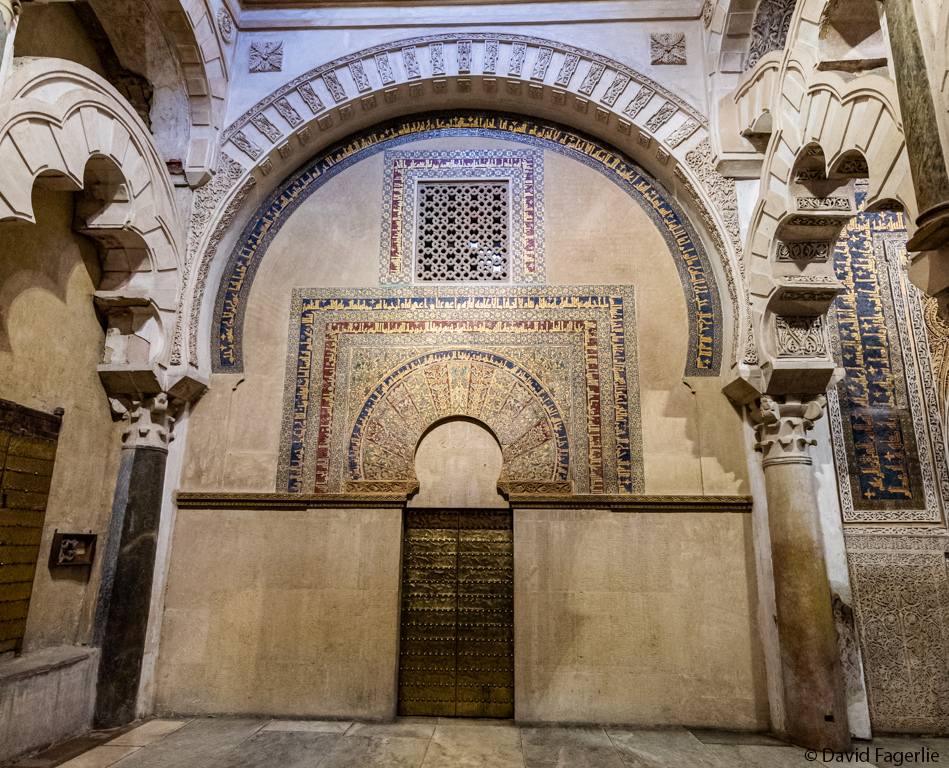
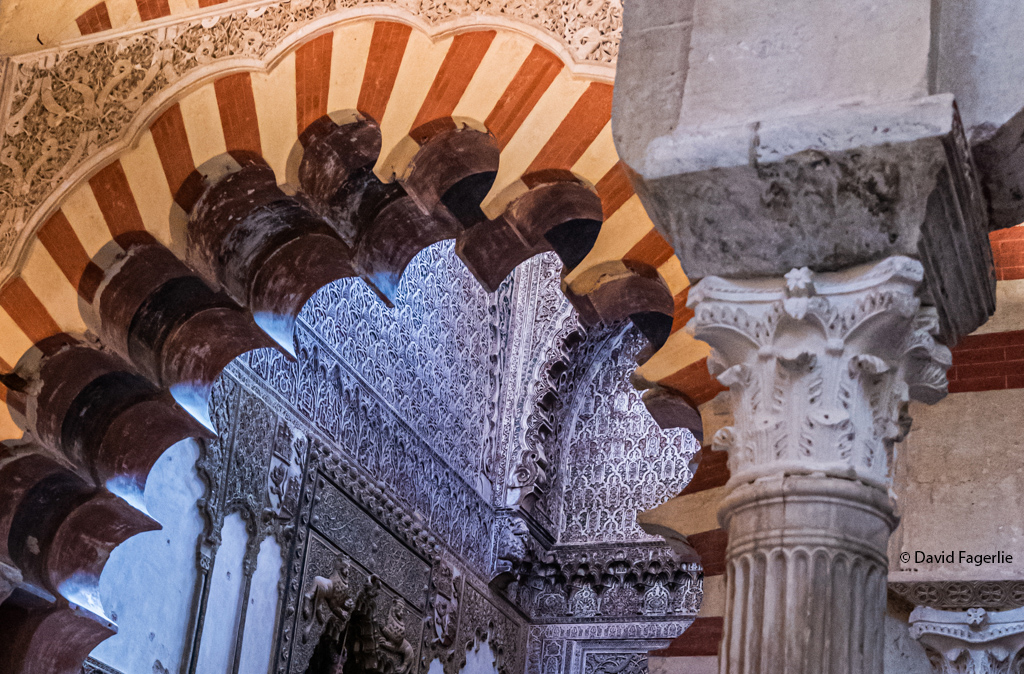
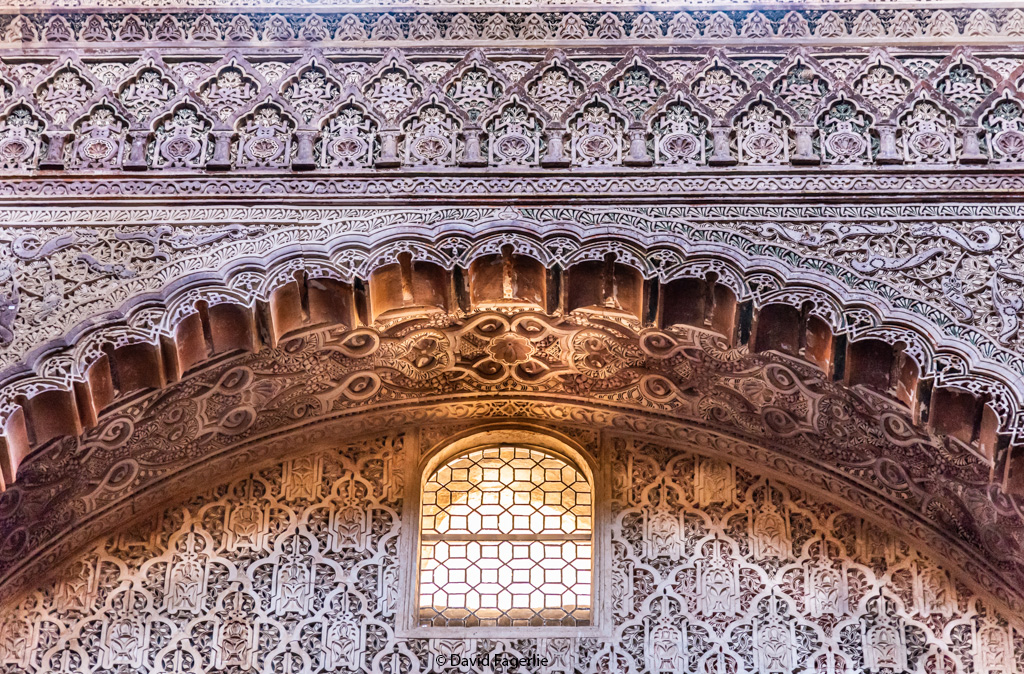
The mihrab is arguably the most important place within a mosque. It is the direction of prayers and a place from which leaders communicate. The inner area of the mihrab is reserved for mosque leadership. Traditionally, the mihrab of a mosque faces in the direction of Mecca. The faithful come to pray facing the mihrab and, by definition, in the direction of Mecca. In this case, however, Mecca is east-southeast of the mosque but the mihrab of this mosque faces south. (I did not find a rationale for this design decision.)
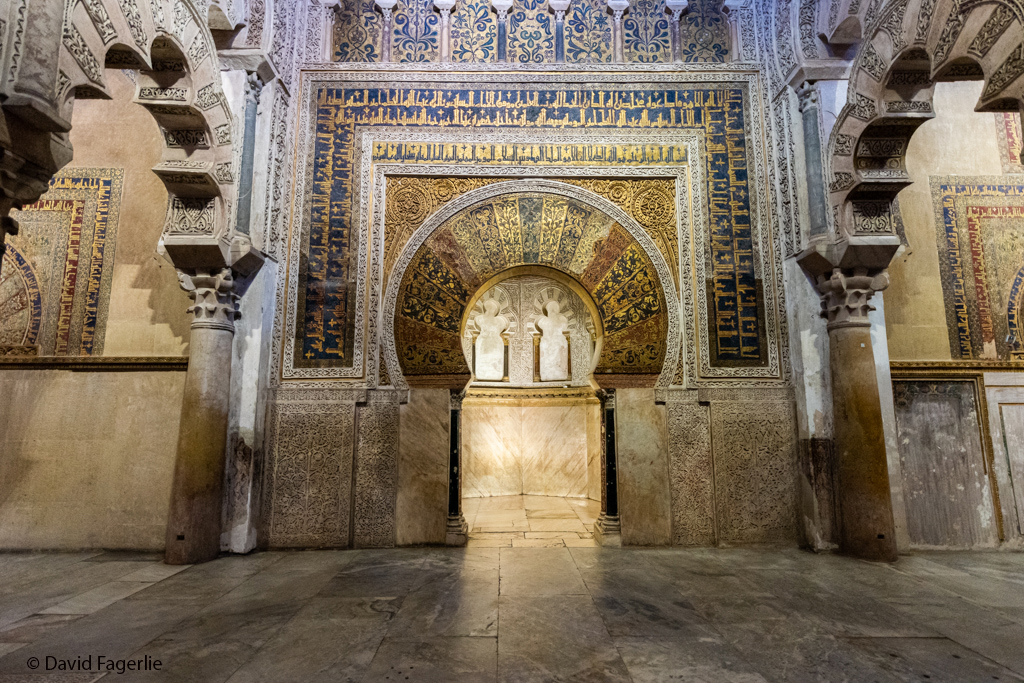
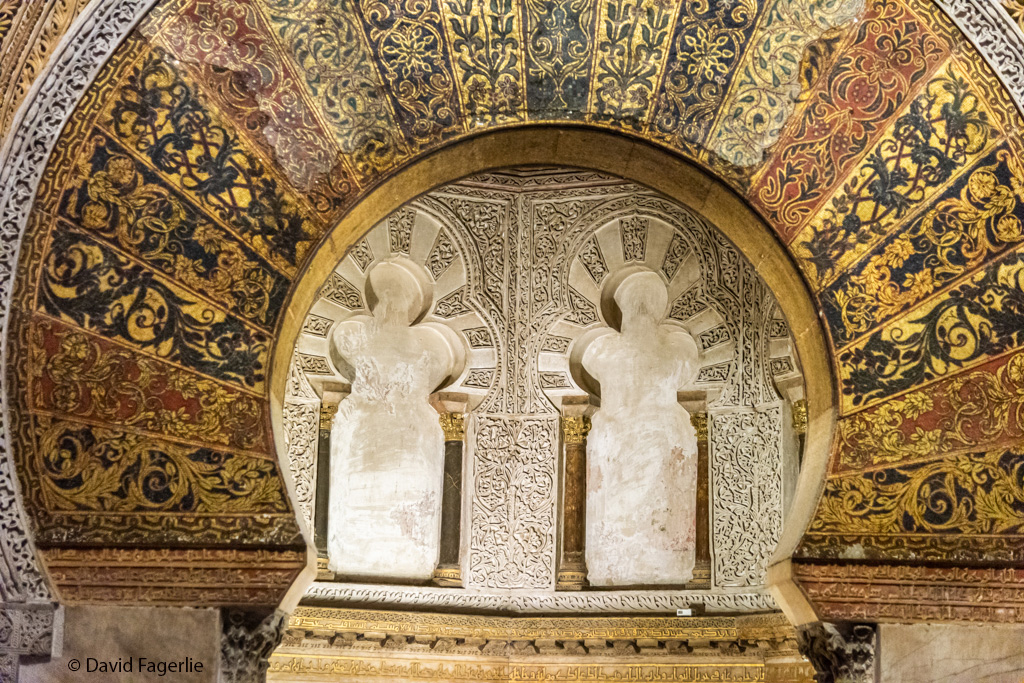
Following is a painting by Edwin Lord Weeks depicting a call to arms against the Christians at the mihrab of the Grand Mosque of Córdoba. In fact, a call to arms would not have been done at the mihrab, which is a place for prayer.
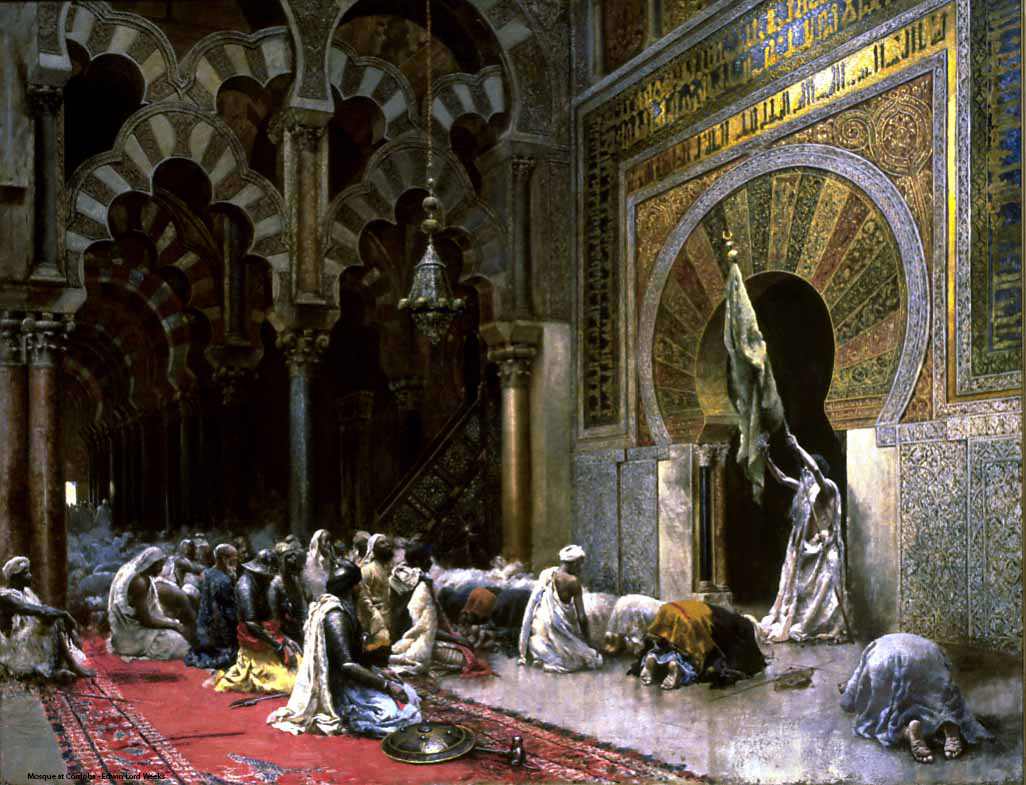
In 1236 Córdoba was conquered by King Ferdinand III of Castile. Later, Alfonso X, king of Castile, Léon and Galicia from 1252 until his death in 1284, oversaw construction of the Villaviciosa Chapel and the Royal Chapel within the mosque. The merger of Muslim and Catholic influences created a structure that is surprisingly seamless in transition from one part to another and completely unique in the world. The chapel design required a very high ceiling. A large dome for this purpose was built above the center of the proposed chapel location. Note the large dome in this photo of the Mezquita as well as the gigantic size of the building overall, which extends beyond both sides of this photograph.

The passageway from the outer mosque to the center where the chapels were constructed had the grandeur one might expect. I was struck by the seamlessness of the transition.
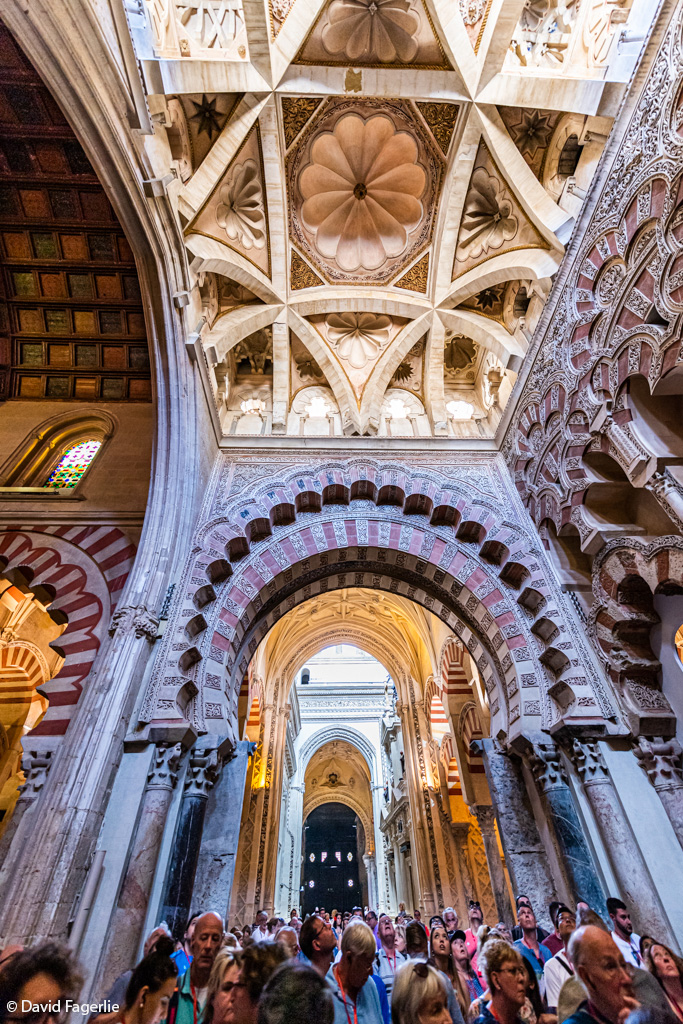
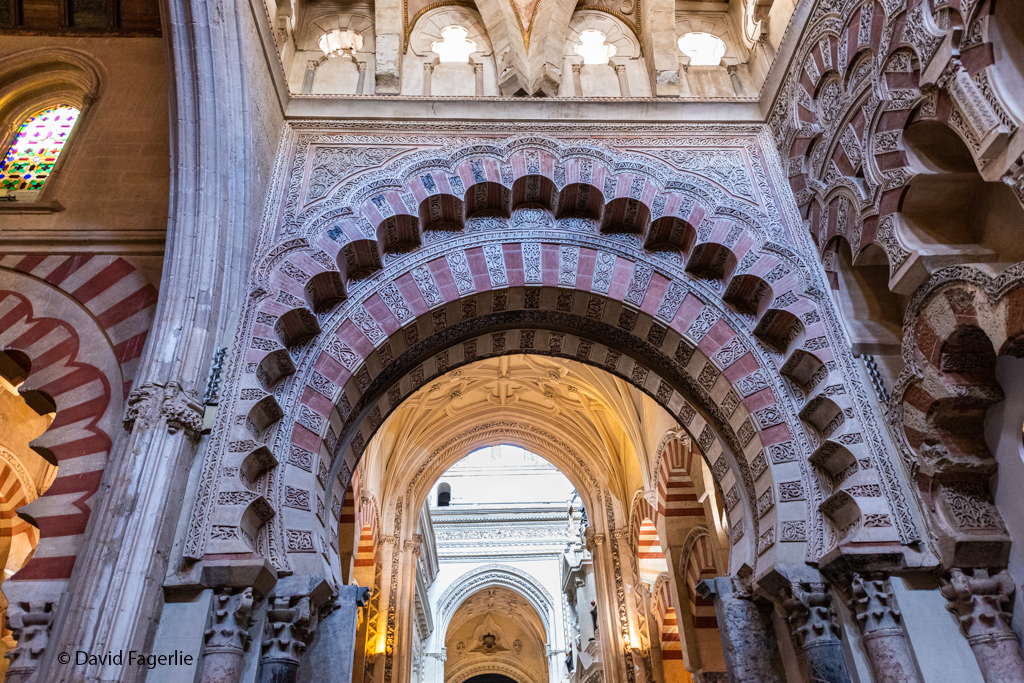
The chapels were as spectacular as the mosque, just very different.
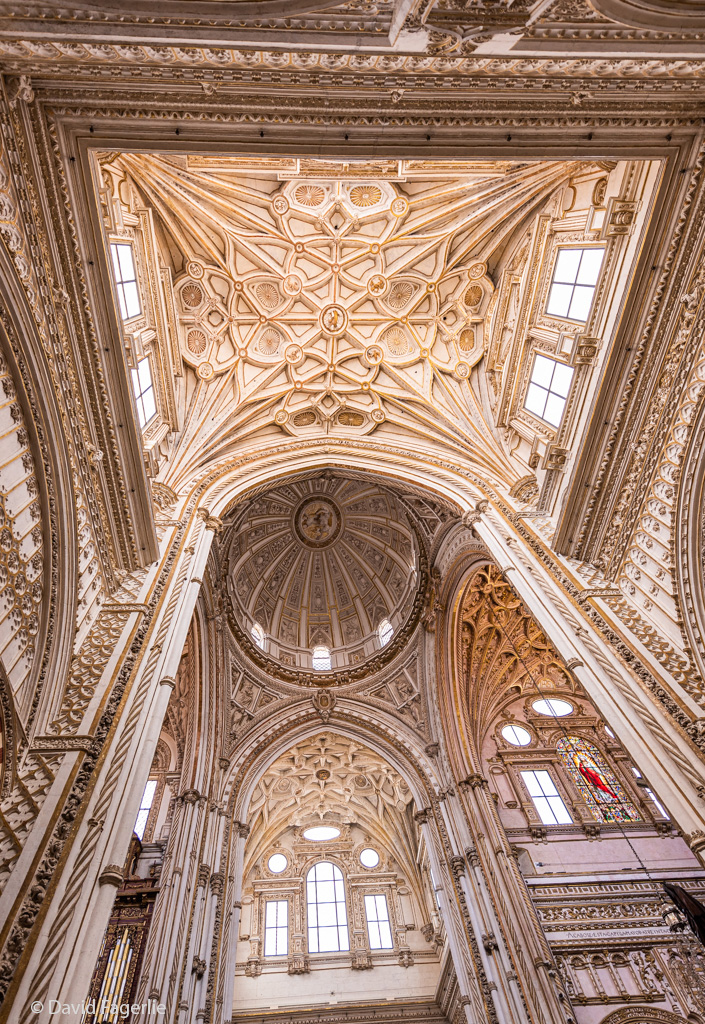
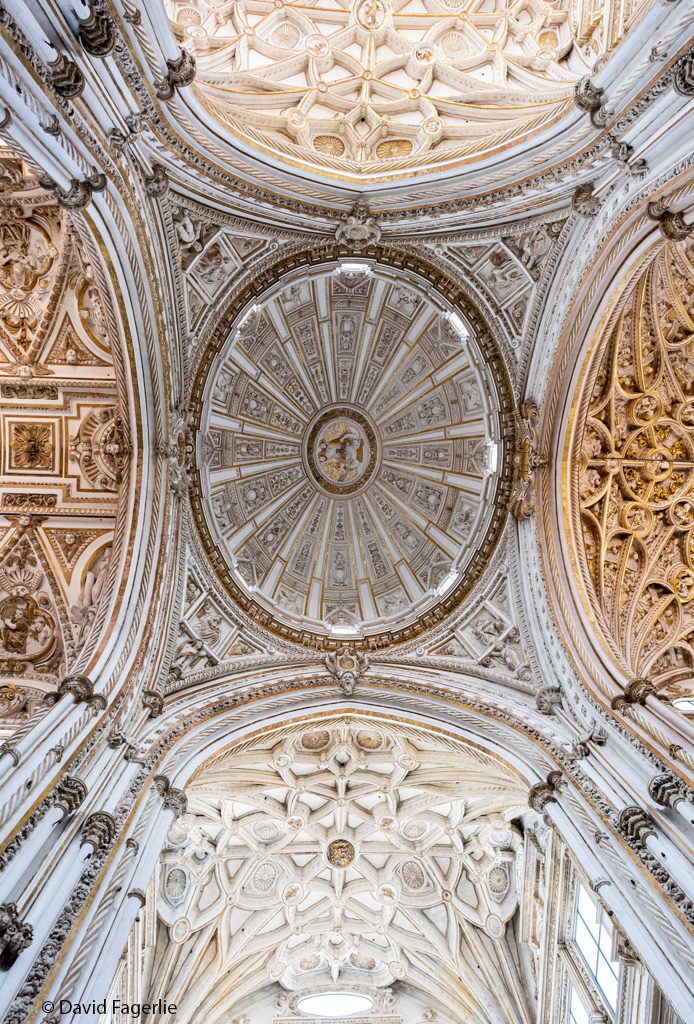
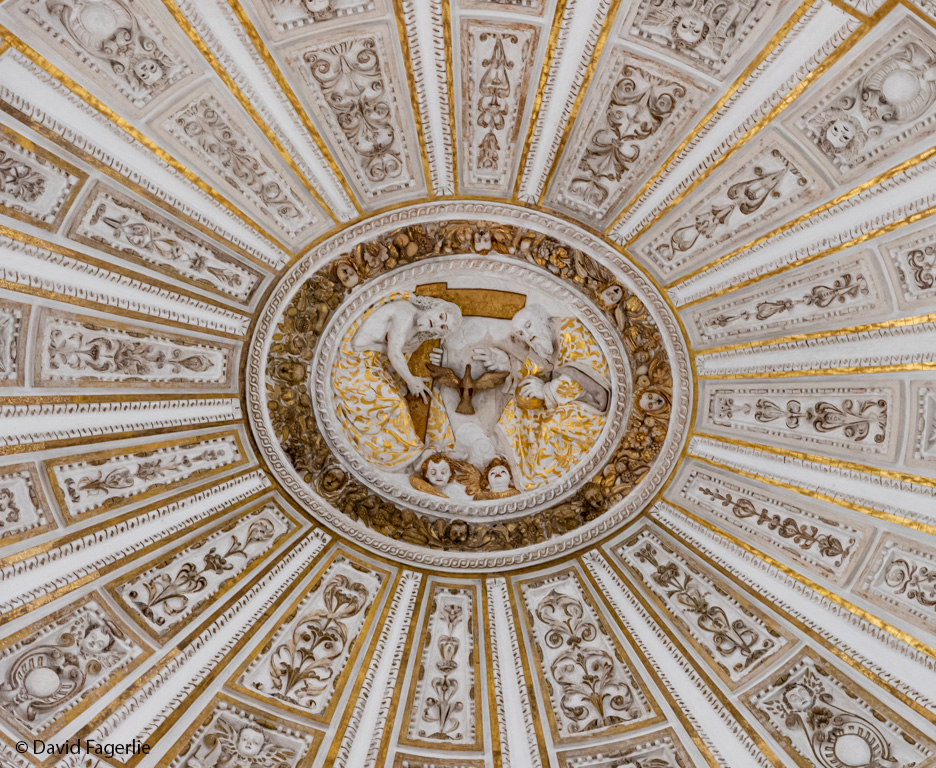
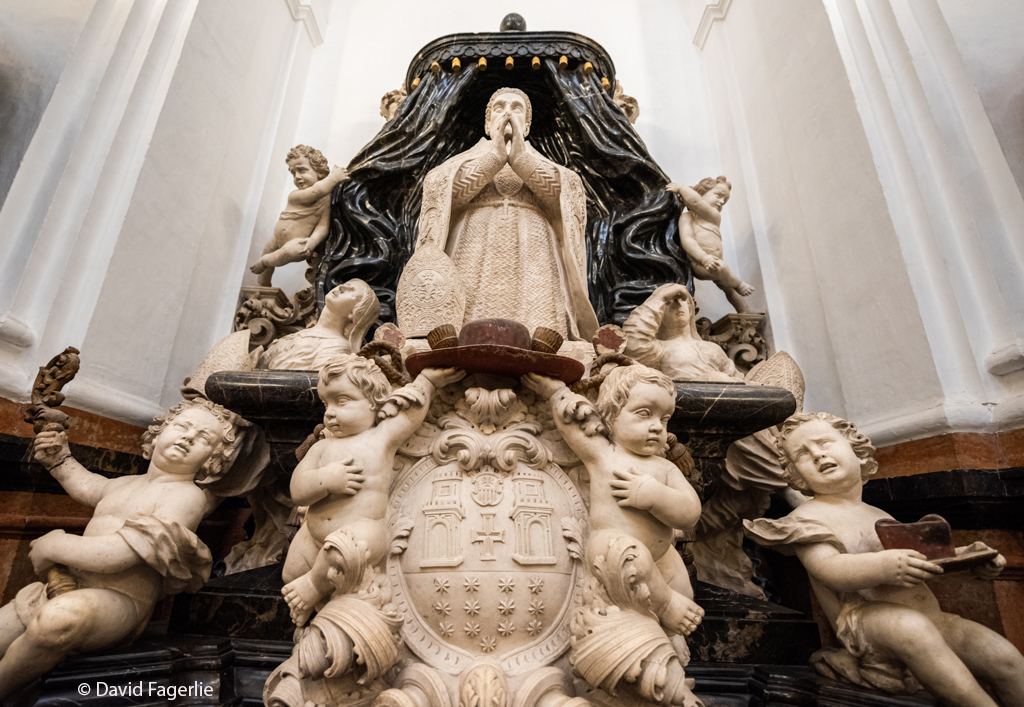
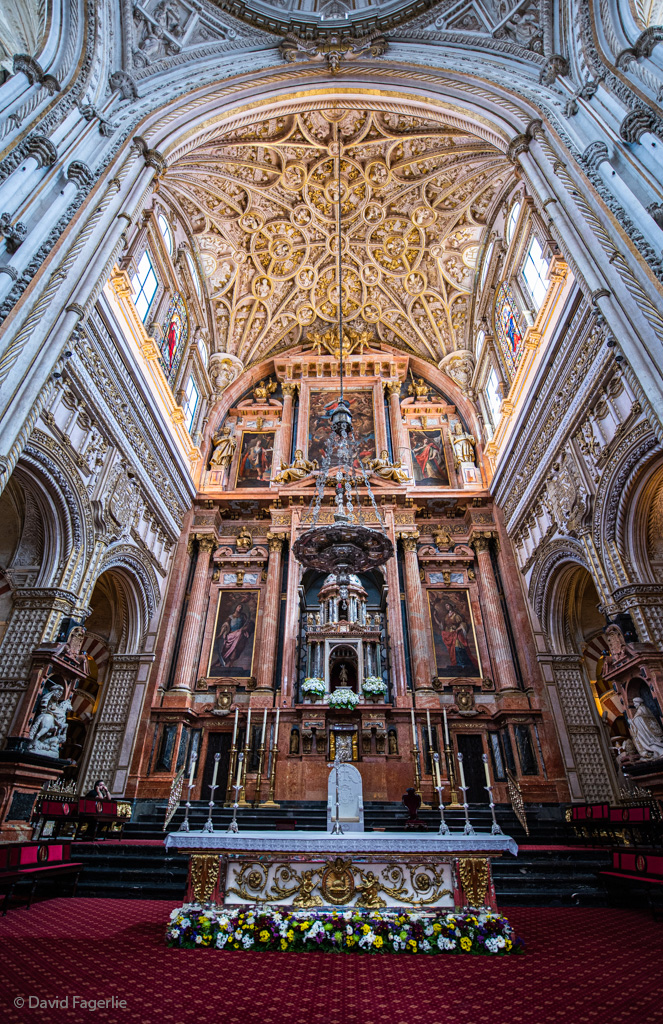
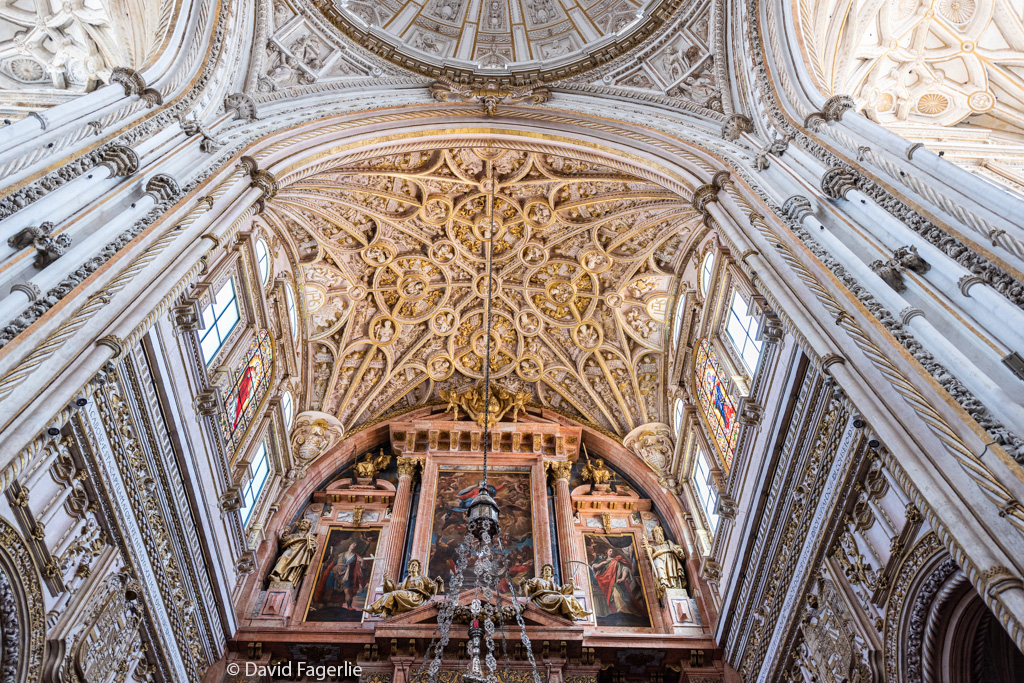
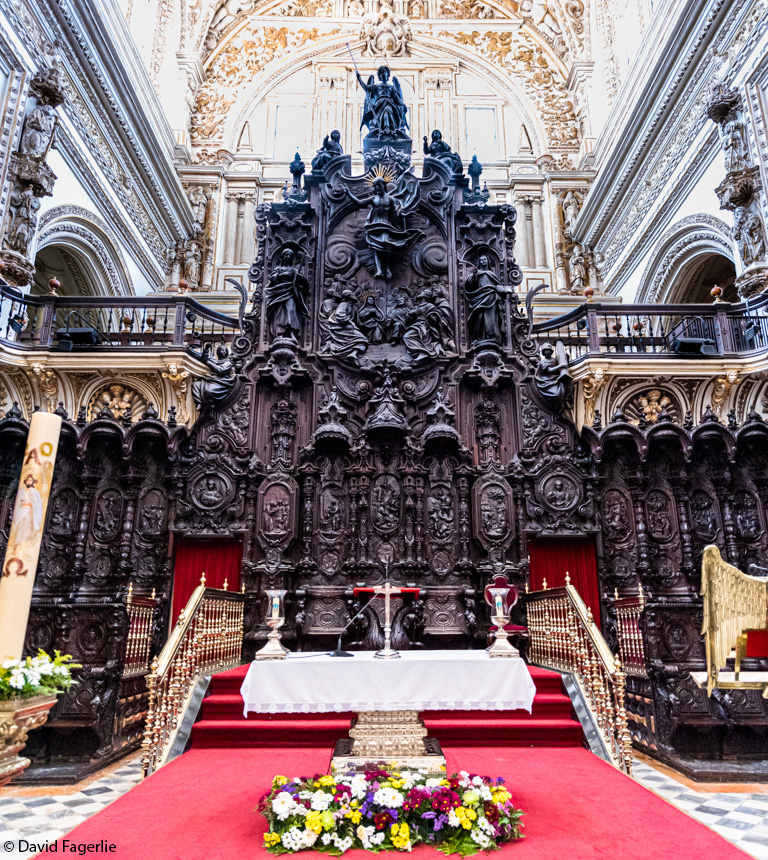


The Mezquita was declared a UNESCO World Heritage site in 1984.
Córdoba today is full of good restaurants, coffee and gift shops and more. Here are some images.
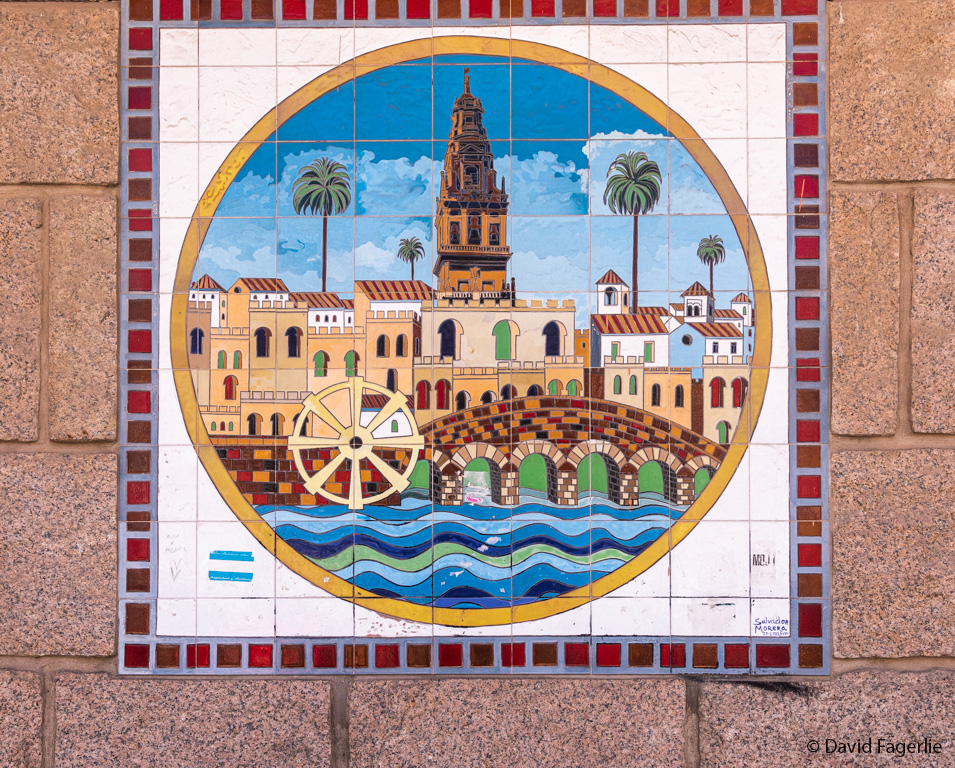
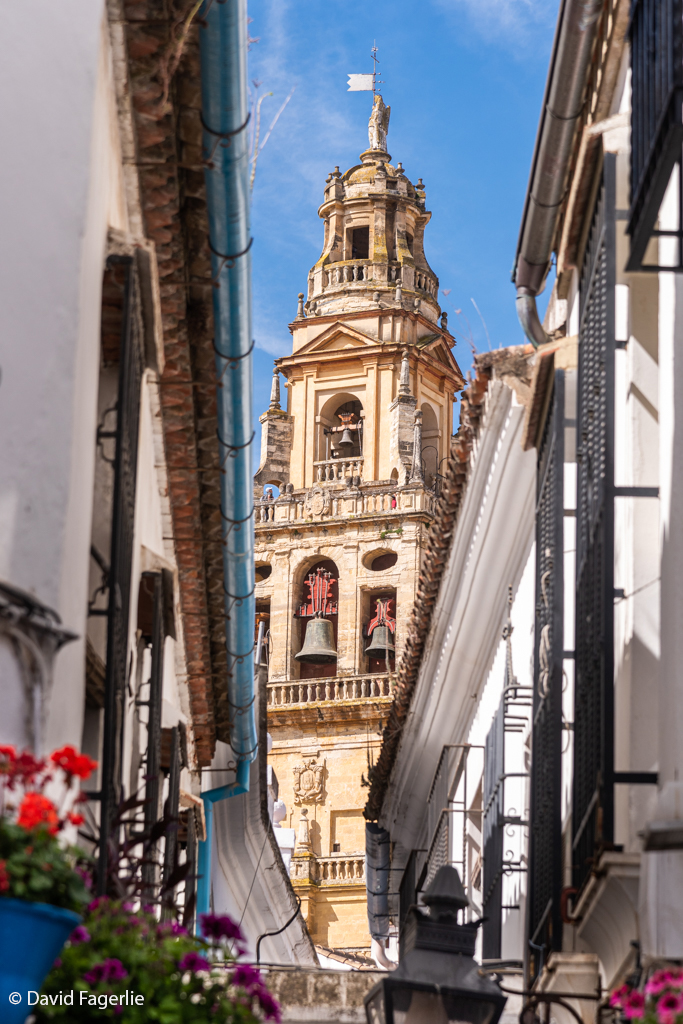
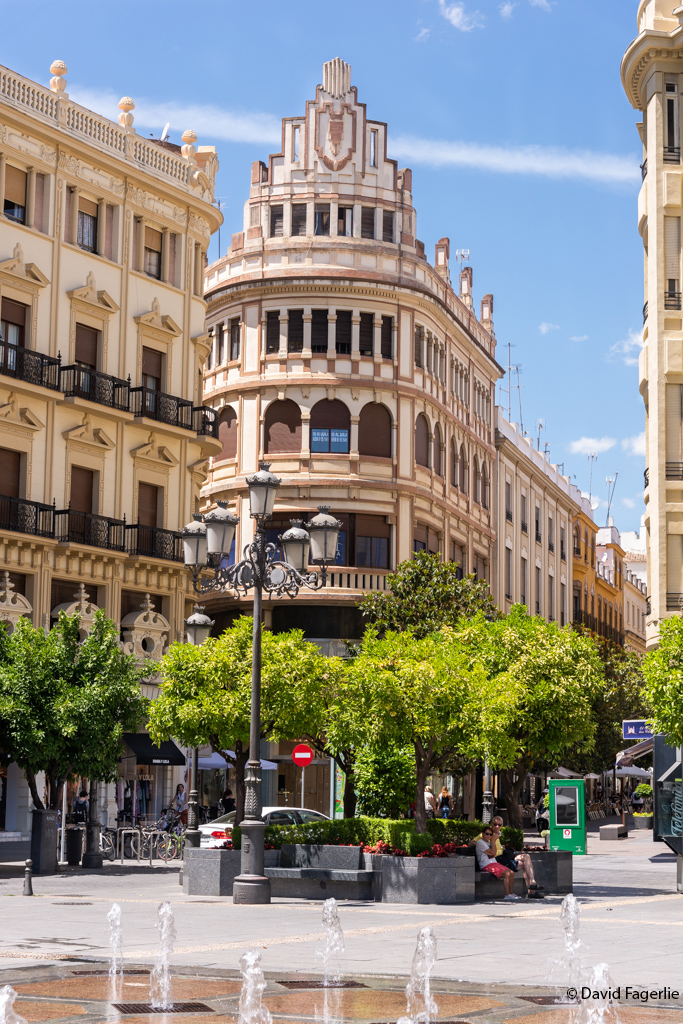
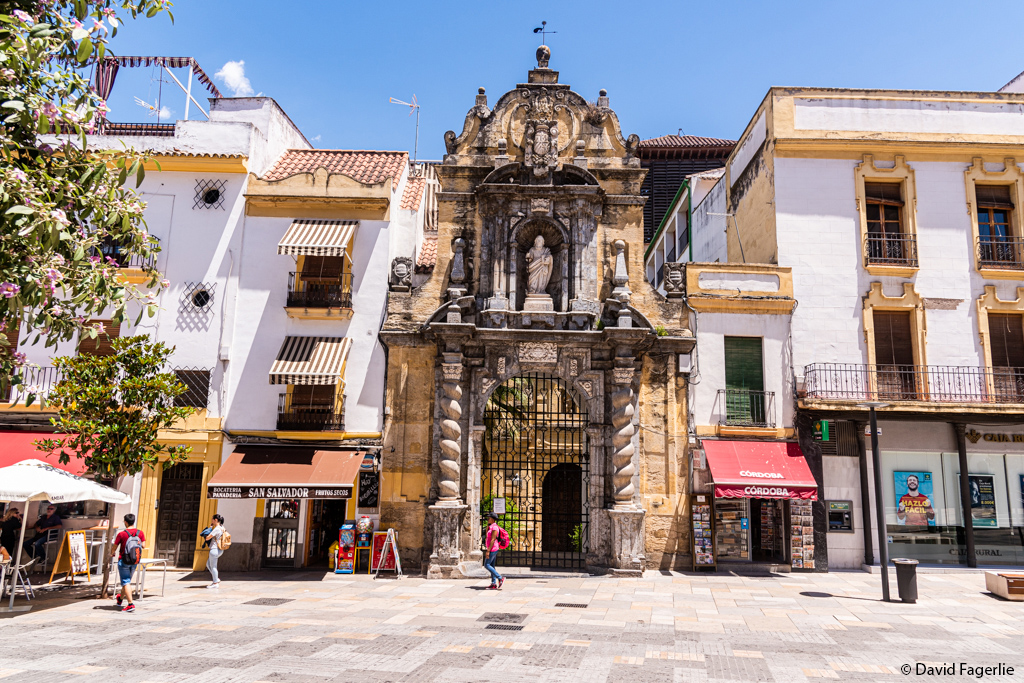

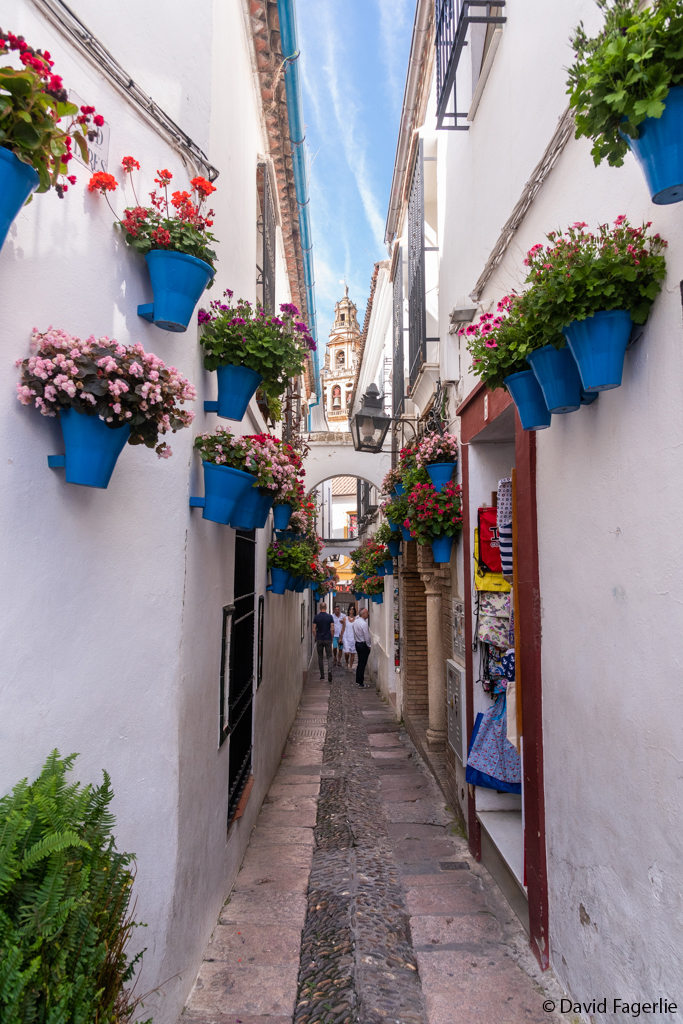
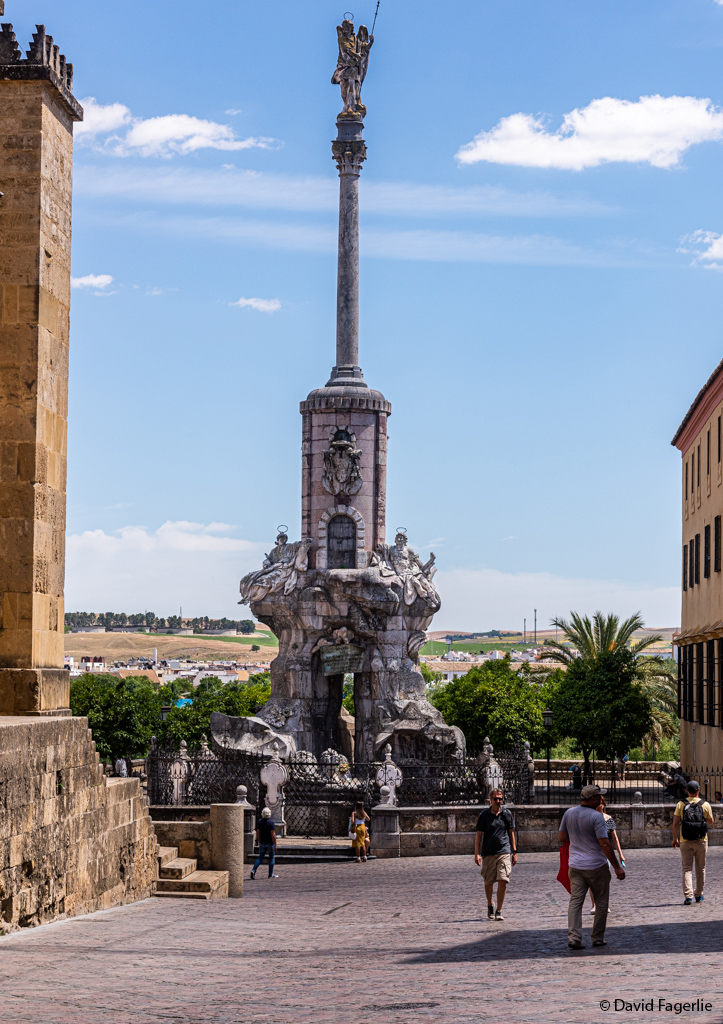
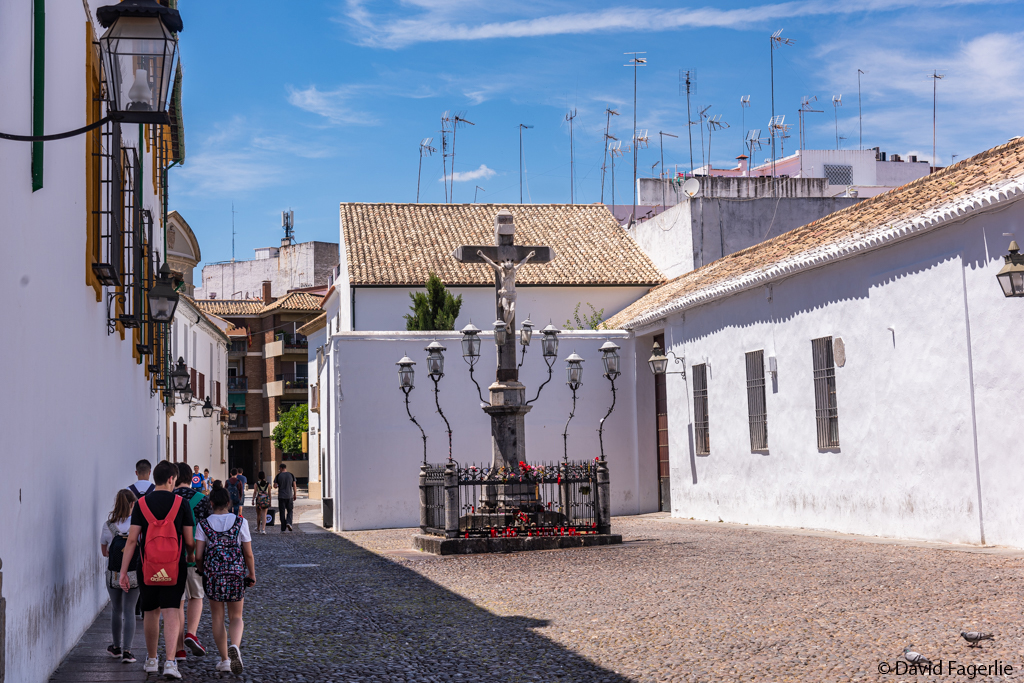
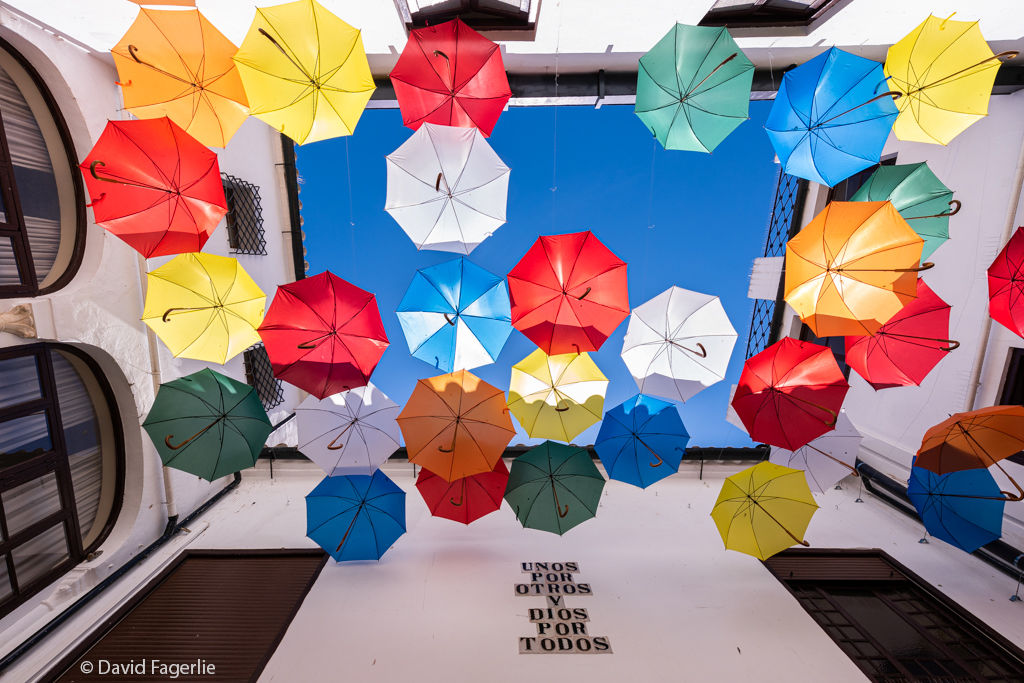
Higher-resolution images are available as a slide show in Galleries. You can access the gallery for this chapter directly by clicking HERE
Next Monday we visit Granada. See you then.
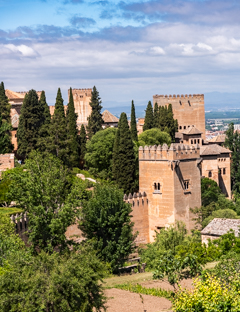
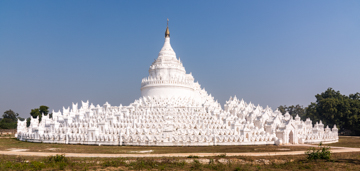
September 21, 2020
Chapter 2: Alhambra
Years following creation of the Mezquita in Córdoba, the Alhambra was constructed in 889 in Granada and the Alcázar in 913 in Seville.